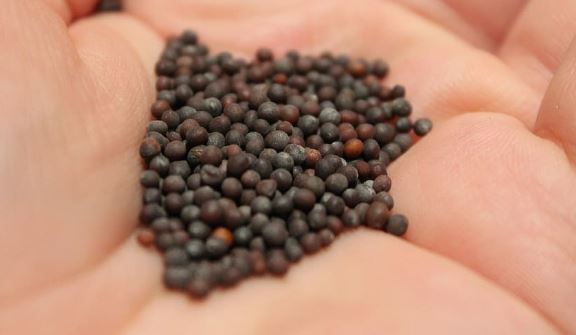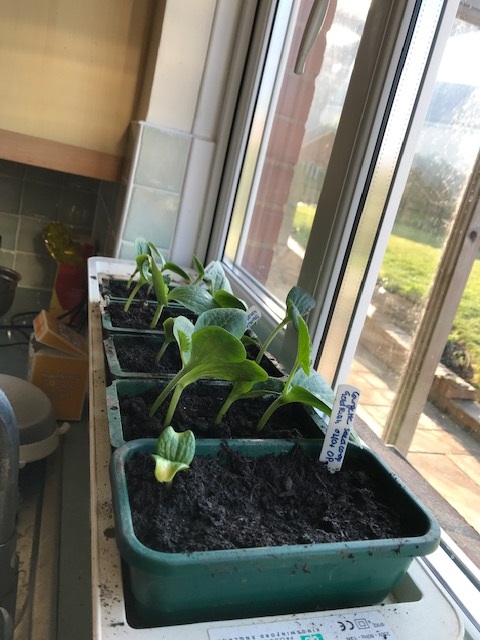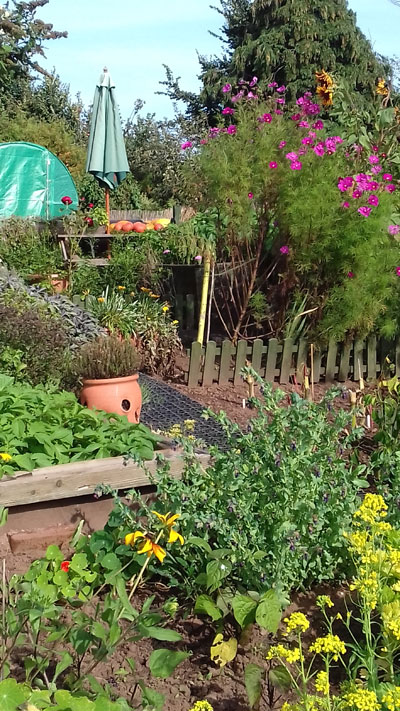 I hope everyone is well and safe. These are such troubling times but it has to be said, an allotment is a real gift. Although I do have a garden at home, it is lovely to go up to the allotment and work quietly on the plot. There are some plots around me where people have been very busy and they are looking very good.
I hope everyone is well and safe. These are such troubling times but it has to be said, an allotment is a real gift. Although I do have a garden at home, it is lovely to go up to the allotment and work quietly on the plot. There are some plots around me where people have been very busy and they are looking very good.
Last autumn, I started to think about saving some of my own seed. I did this because I had the experience of several packets of seed from different suppliers with very poor germination rates. It was a good time to think about this because if you have tried to buy any seed recently, you will have realised that the seed companies are inundated with everyone wanting to grow some of their own food. Many seed sites only open their website for a few hours and then close again until all the orders have been packaged. Others have a queuing system before you can get onto the site and some are just shut. Someone needs to be out in the fields sowing plants for next year's seed! Thank goodness for Kings and the allotment association!


There is nothing more disappointing than seeds which do not germinate. If you are interested, this article describes a simple process that you can follow to see if it is you or the seed. I will be trying this on two packets of seed from a small company where I have had dreadful results. However, I have read that saving your own seed can mean that you get better germination percentages and sometimes rates with fresh, own saved seeds germinating much quicker. Saving your own seed also means that you can pick the best of the crops to save the seed from and that the seed becomes accustomed to your soil and climate. You are also preserving some of the older crops and ensuring seed diversity.
The trouble is, that you can't just save seed from any old veg. It has to be open-pollinated vegetables, those that are not F1 hybrids or have crossed parents. A little investigation on the web revealed that quite a few vegetables I already grow are open-pollinated. If the seed is quite cheap in comparison with other seed from the company, chances are it is open-pollinated and you can save some for next year. One good example is tomato seeds. The 10 seeds in a packet of Sungold are not open-pollinated whereas the 150 seeds in a packet of Tigerella are. Listed below are a few more commonly grown seeds which you can save. The link included in the vegetable name takes you to a site that has good information about saving the seed for that type of vegetable.
Beans - Blue Lake, Cobra
Beetroot - Boltardy and Chiogga
Cabbage - Greyhound, April, Filderkraut
Chicory - Palla Rossa
Cucumber - Crystal lemon
Celariac - Giant Prague
Kale - Nero di Toscana, Red Russian
Courgette - Gold Rush
Onion - Ailsa Craig, Red Brunswick
Parsnip - Tender and True
Peas - Kelvedon Wonder
Leeks - Bleu Solaise, Swiss Giant Zermatt
Lettuce - Reine des Glaces, Rouge Grenobloise, Little Gem, Oakleaf, Red Salad Bowl, Freckles, Black Seeded Simpson, Rouge d'Hiver
Winter Squash - Waltham Butternut, Delicata, Red Kuri
Tomatoes - Brandy Wine, Tigerella, Green Zebra, Black Krim or Black Russian, Cotoluto Fiorentino, Gardener's Delight
As I write this list, which is very personal to me and what I grow, I can see that many of these are the seeds that you quite often get free with magazines.
Real Seeds is an interesting company because it only sells open-pollinated seeds and states as its mission that you should never need to buy the same packet of seeds from them again because you can save your own. It also has a really good seed-saving booklet that you can download here.
Do you save your own seed? Have you any tips you can share?
